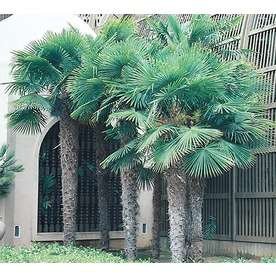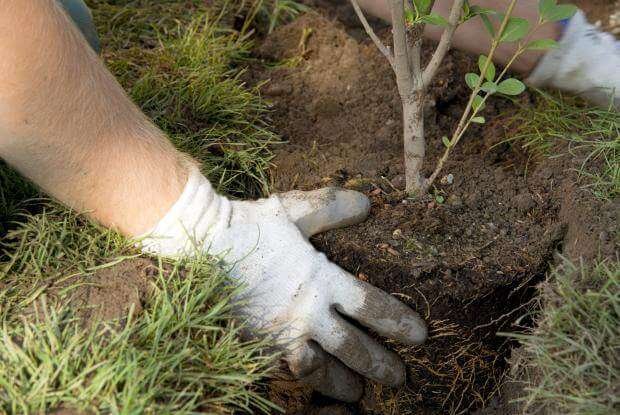Planting Palms

Planting palms is the most popular way of creating a tropical look in a landscape. Palms are used in landscaping for homes, commercial properties, parks, and along streets and highways. They are planted as specimens, groupings, border plants, trees, and shrubs. Palms come in various sizes from large, medium-sized, to small. Palms can be in single or multiple trunk forms.
Factors When Planting Palms
When planting palms there are some factors that need to be considered before choosing a specific palm for a planting site.
First, one must think about how well the palm fit in a landscape when it eventually becomes fully mature. As a standard rule, landscapes in small lots with one-story homes look better with medium-sized or small palms. Large palms look better in landscapes in large lots or planted around larger buildings. Plus, always keep in mind will a large tall palm tree interfere with power lines when it eventually reaches its mature height.
Think about what the soil drainage is like at the planting site. Although adequate amounts of watering is recommended, very few palms will tolerate continuous wet conditions. Planting palms such as the Paurotis or “Everglades” palm is the best choice for wet areas. Queen palms or Coconut palms can somewhat tolerate wet sites, but it must be only for a short period of time.
For areas that have a tendency to stay dry, once established the Pindo palm, Chines Fan palm, European Fan palm, Canary Island Date palm, and Washington (Washingtonia) palm do the best. However, even though these palms can tolerate dry conditions better than most palms, they do require some watering from irrigation or occasional rainfall.
Before Planting palms know how much sun exposure the planting site receives, full sun, part sun, part shade, or full shade. Choose a palm with the same light requirements as the location receives. It is important to know how much sunlight each specific palm needs to be healthy. This way the right palm will be planted in the right spot.
Tips For Planting Palms
Follow these tips for palms to be healthy and grow to their fullest potential
If the palm purchased is “Balled and Burlaped” and cannot be planted immediately, it is important to store it properly before planting. Most palms can remain out of the ground for 2 to 3 days, as long as they are kept in the shade and the root ball is watered daily. Otherwise, the rootball will be severely damaged and the chances of good establishment will be reduced.
Many palms are planted too deeply which causes the roots to be suffocated and will invite root disease to occur. It is very important to remember that when planting palms, they are placed in the ground (hole dug) at the same depth as it was grown originally in the field or container. Do Not Plant Too Deep.
9 Steps For Planting Palms
To ensure proper planting and establishment of palms follow these steps
#1. If the palm is in a container cut the sides from top to bottom so it can be removed as easily as possible.
#2. Dig the hole wide enough so the rootball fits easily and provides space for new growth from the ball.
#3. Dig the hole just deep enough so the palm is planted at the same depth as grown in the container or the field (top of the rootball even with soil surface).
#4. Gently place the palm straight in the hole, and fill in the sides with the soil removed from digging the hole. Water thoroughly to remove any air pockets.
#5. Form a basin around the base of the palm to retain water when irrigating.
#6. Spread an organic mulch around the palm at a 2-3 inch depth. Do Not pile mulch up against the trunk, leave some space.
#7. Support large palms with wooden braces to maintain good stability for the first 6 to 8 months. Do Not drive nails into the trunk.
#8. Water daily during the first 3 weeks and thereafter frequently, continuing until the palm is well established.
#9. Apply a slow-release granular “Palm Fertilizer” 3 months after planting. Once the palm is well established, adopt a program of fertilizing 3 times a year (spring, mid-summer, and early fall) using a slow-release granular palm fertilizer.
It is very important that palms have a good foundation for them to grow healthy right from the beginning. That is why planting palms needs to be done correctly. Proper establishment helps palms to be successful in adding that tropical look to a landscape.






